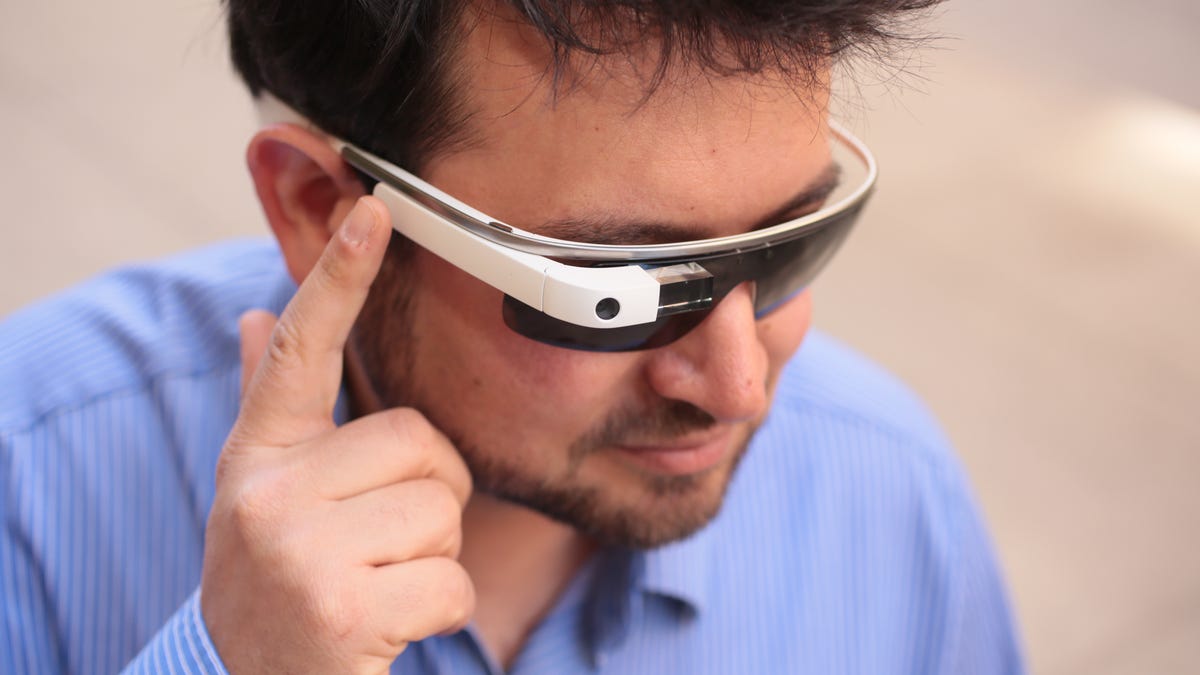Google Glass lives on inside Google's new Pixel products
Google's most ridiculous thing is now in all your gadgets.

Back in 2013, I was boarding a New Jersey Transit train with a piece of metal and plastic on my head.
Google Glass ended up being a symbol of many things -- the technology industry's cavalier invasions of privacy, or its increasing elitism -- but its promise of a cyborg future didn't ever really arrive.
More from Google's event
In fact, the device didn't really do all that much. Glass was mostly a head-mounted camera. What I wanted it to be was more of an all-seeing smart-seeing device. A brilliant AI companion. A magic automatic camera. A way to automatically translate or interpret things I see.
It turns out, four years later, Google did many these things... but skipped the Glass.
Google Glass still lives on in an enterprise-based model made for accessibility, industrial and research applications, but it's not for the everyday person. But it's fascinating to me that, at the heart of it all, Google hasn't given up on any of those ideas lurking in Google Glass. In fact, Google's latest mainstream hardware launch -- the Pixel 2 phones, new Pixel Bud headphones and more --has pieces of that old Google Glass dream all over the place.
Here's how Google just atomized Glass across its entire product line.
The always-on camera lives on, just not on your face.
Always-on smart camera: Clips
Instead of tapping on my face to take photos, Clips seems like the more advanced answer to that Google dream of recording memories 24/7. The POV effect looks similar, and its always-snapping lens feels like it's going for the same idea. But Google's machine learning smarts have vastly improved. Clips (which I haven't tried) takes photos automatically based on what it senses makes a good moment. Google Glass never did that. Older clip-on "memory-recording" cameras I've tried, like Narrative Clip, weren't great. But maybe Google's figured it out this time... and maybe it's a sign of automatic, always-on cameras in everything to come.
Google Lens, a Pixel 2 feature, promises an AI-boosted camera.
A magic world-seeing lens: Google Lens
Glass never could really identify things it saw, although a translation plug-in allowed some instant-translation tricks. Google Lens is the "hey, what is that" magic camera tool I was expecting in 2013. Debuting on the Pixel 2, it promises to identify words, objects, and be an AI-boosted assistant to the world. Back in 2013, everyone thought I was doing this when I wore Google Glass.
Touch-based instant ear assistants (or, headphones)
One-tap assistance and translation: Pixel Buds
With touch controls and instant language translation shortcuts, Google's new Pixel Buds feel like assistant-meets-headphones. Google Glass had voice activation ("OK, Glass") and a small touchpad, too, mainly for tapping to get Google Now, or swiping to navigate the tiny menu.
Augmented reality: ARCore apps
Glass never did more advanced augmented reality, for the most part, but Google's ARCore apps place realistic 3D objects into the real world using phone screens, much like Apple now does with ARKit on iPhones. Boom, it's real-world magic things, but now you have to hold your phone up to see them.
Watch replaced glasses.
Notifications: There's always Android Wear
Instead of smartglass notifications, why not a watch? Key members of the Google Glass team moved to Android Wear back at its launch in 2014, and the basic pop-up notification system still feels like the final evolutionary step of Google Glass' micro-display. Smartwatches are still a nonessential part of the gadget landscape, but the fitness and notification features (and lower price) have made them easier to buy.
Silly-looking headwear: (Mostly) not present
The only thing that's missing from the old Google Glass, really, is the headgear. (OK, while the Pixel Buds aren't terribly stylish, they don't look too different from other "wired" wireless headsets.) While it was fun being an experimental tech explorer on a part-time basis all those years ago, I don't miss it at all. We might see a future jump to smartglasses down the road once mixed reality tech and improved AR seep into glasses. But it looks like Google's found a way to keep those seeds alive in a lot of other products.
Call it the revenge of Google Glass: It isn't gone, just diversified.

